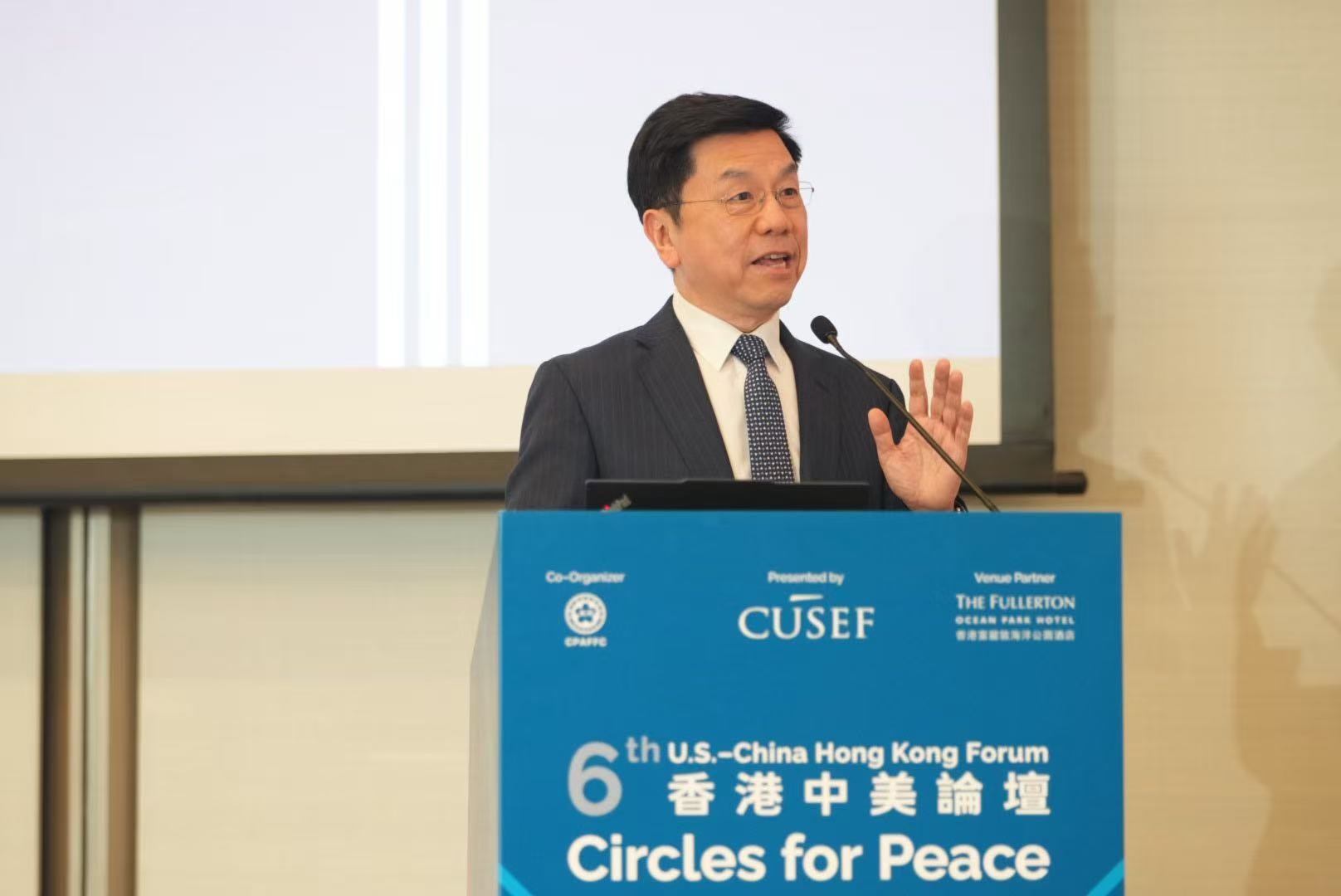
Artificial intelligence is expected to become the most powerful engine of future economic growth, and open-source AI that is accessible for anyone to view and modify is likely to dominate the market, according to industry leaders and scholars at the 6th United States-China Hong Kong Forum on Monday.
Despite the optimism, they also cautioned against AI’s potential risks, emphasizing that a human-centered approach will be important to narrow the gaps in knowledge and opportunities that the technology could widen.
“AI is going to (bring) the largest gross domestic product increase in the world, because it’s fundamentally making machines think smarter than we do,” said Kai-Fu Lee, chief executive officer of 01.AI, a company developing open-source AI models.

“AI is powered by large language models, which now not only possesses a brilliant liberal arts superstar, but also a mathematics superstar and a computer programming superstar — (all) combined into one.”
Lee, who previously served as president of Google Greater China, said that around 90 percent of the code produced at his company 01.AI is written by AI rather than humans. Such practice alone represents “a tenfold increase in productivity” for software engineers globally, which was unimaginable five years ago.
“AI is such an amazing propeller of the global economy, and I truly believe it will create trillions of dollars of value,” said Lee, adding that both American and Chinese companies are poised to benefit from it.
ALSO READ: China's open-source model DeepSeek unveils AI black box, promotes transparency
In the process, open-source AI — models that can be copied, owned, and improved without fees — are the “future”, Lee said. He compared the relationship to that between Windows and Linux, or Apple’s macOS/ iOS and Android. The former is closed-source, typically referring to software whose source code is kept private by the developer, and the latter open.
According to Lee, China’s model market share has reached 64 percent as the US’ share has declined to 30 percent. “Inevitably, the most profitable companies will be the closed-source players that integrate and sell value and charge a premium price,” he said. “But the largest share of the market will be held by open‑source models.”
Besides the transformative power of AI, the forum, themed Circles for Peace, also touched on its risks and the need for the international community to mitigate them.

Michelle Williams, professor of epidemiology and population health at Stanford University, said AI would be transformative if designed jointly by academia, technology, and healthcare “around principles (of) equity, transparency, and trust”.
“Our task is to shape AI in ways that close gaps (rather than) widen them,” Williams said, adding that we can use AI to narrow inequalities in knowledge, health, and opportunities.
“If we take a human-centered approach and take the responsibility that comes with the gifts we all have, we can close gaps, increase collaboration, and unlock human potential.”
She cited two examples illustrating how AI can help bridge disparities in education and health resources: Peking University is using AI to promote educational equity through a program called Dual Teaching Classroom, which helps train teachers in rural areas; Stanford University is developing a course using AI technologies to help doctors who work in medically under-resourced rural communities.
Contact the writer at irisli@chinadailyhk.com


